
Laura is a 1944 American film noir produced and directed by Otto Preminger. It stars Gene Tierney and Dana Andrews, along with Clifton Webb, Vincent Price, and Judith Anderson. The screenplay by Jay Dratler, Samuel Hoffenstein, and Betty Reinhardt is based on the 1943 novel Laura by Vera Caspary. Laura received five nominations for the Academy Awards, including for Best Director, winning for Best Black and White Cinematography. In 1999, Laura was selected for preservation in the United States National Film Registry by the Library of Congress as being "culturally, historically, or aesthetically significant". The American Film Institute named it one of the 10 best mystery films of all time, and it also appears on Roger Ebert's "Great Movies" series.

The Pied Piper is a 1942 American film in which an Englishman on vacation in France is caught up in the German invasion of that country, and finds himself taking an ever-growing group of children to safety. It stars Monty Woolley, Roddy McDowall and Anne Baxter. The film was adapted by Nunnally Johnson from the 1942 novel of the same name by Nevil Shute. It was directed by Irving Pichel.

Heaven Can Wait is a 1943 Technicolor American supernatural comedy film produced and directed by Ernst Lubitsch. The screenplay was by Samson Raphaelson based on the play Birthday by Ladislaus Bus-Fekete. The music score was by Alfred Newman and the cinematography by Edward Cronjager.

Edgar Montillion "Monty" Woolley was an American film and theater actor. At the age of 50, he achieved a measure of stardom for his role in the 1939 stage play The Man Who Came to Dinner and its 1942 film adaptation. His distinctive white beard was his trademark and he was affectionately known as "The Beard."
Holy matrimony is a phrase used to describe Christian marriage. It may also refer to:
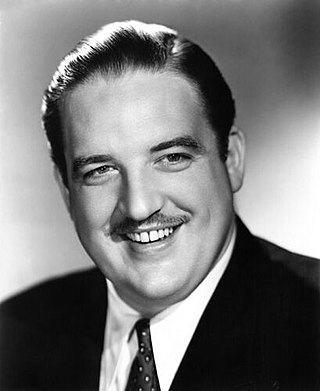
Samuel Laird Cregar was an American stage and film actor. Cregar was best known for his villainous performances in films such as I Wake Up Screaming (1941), This Gun For Hire (1942) and The Lodger (1944).

Franklin Pangborn was an American comedic character actor famous for playing small but memorable roles with comic flair. He appeared in many Preston Sturges movies as well as the W. C. Fields films International House, The Bank Dick, and Never Give a Sucker an Even Break. For his contributions to motion pictures, he received a star on the Hollywood Walk of Fame at 1500 Vine Street posthumously on February 8, 1960.

Nunnally Hunter Johnson was an American screenwriter, film director, producer and playwright. As a filmmaker, he wrote the screenplays to more than fifty films in a career that spanned from 1927 to 1967. He also produced more than half of the films he wrote scripts for and directed eight of those movies. In 1940 he was nominated for the Academy Award for Best Adapted Screenplay for The Grapes of Wrath and in 1956, he was nominated for the Directors Guild of America Award for Outstanding Directing – Feature Film for The Man in the Gray Flannel Suit. Some of his other notable films include Tobacco Road (1941), The Moon Is Down (1943), Casanova Brown (1944), The Keys of the Kingdom (1944), The Woman in the Window (1944), The Mudlark (1950), The Desert Fox: The Story of Rommel (1951), My Cousin Rachel (1952), The Three Faces of Eve (1957), Mr. Hobbs Takes a Vacation (1962), and The Dirty Dozen (1967). As a playwright he wrote the books for several Broadway musicals, including the musical revue Shoot the Works (1931), Arthur Schwartz's Park Avenue (1946), Bob Merrill's Henry, Sweet Henry (1967), and Jule Styne's Darling of the Day (1968). He also wrote the 1943 Broadway play The World's Full of Girls.
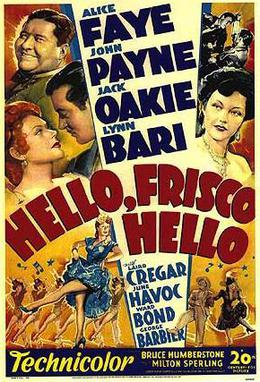
Hello, Frisco, Hello is a 1943 American musical film directed by H. Bruce Humberstone and starring Alice Faye, John Payne, Lynn Bari, and Jack Oakie. The film was made in Technicolor and released by 20th Century-Fox. This was one of the last musicals made by Faye for Fox, and in later interviews Faye said it was clear Fox was promoting Betty Grable as her successor. Released during World War II, the film became one of Faye's highest-grossing pictures for Fox.

I Wake Up Screaming is a 1941 American mystery thriller film noir. directed by H. Bruce Humberstone and starring Betty Grable, Victor Mature and Carole Landis, and features one of Grable's few dramatic roles. It is based on the novel of the same name by Steve Fisher, adapted by Dwight Taylor. It was produced and distributed by 20th Century Fox.
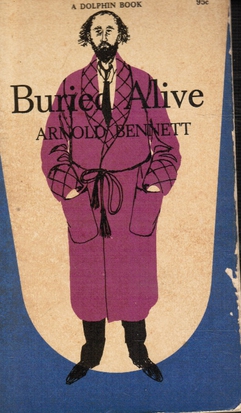
Buried Alive is a 1908 comedy novel by the British writer Arnold Bennett. In 1913 Bennett adapted it as a play The Great Adventure. This later provided the basis for the 1968 musical Darling of the Day.

Henry King was an American actor and film director. Widely considered one of the finest and most successful filmmakers of his era, King was nominated for two Academy Awards for Best Director and directed seven films nominated for the Academy Award for Best Picture.
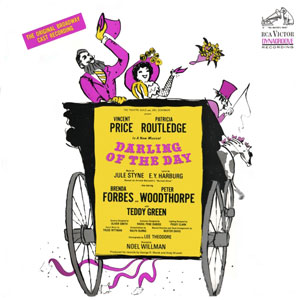
Darling of the Day is a musical with a book by Nunnally Johnson, lyrics by E. Y. Harburg, and music by Jule Styne. It is based on Arnold Bennett's novel Buried Alive and his play The Great Adventure. Patricia Routledge won the Tony Award for Best Actress in a Musical for her performance in the 1968 Broadway production.

Hangover Square is a 1945 American horror film directed by John Brahm, based on the 1941 novel Hangover Square by Patrick Hamilton. The screenplay was written by Barré Lyndon, who made a number of changes to the novel, including transforming George Harvey Bone into a classical composer-pianist and filming the story as a turn-of-the-20th-century period piece.

The Man Who Came to Dinner is a 1942 American screwball comedy film directed by William Keighley, and starring Bette Davis, Ann Sheridan and, as the titular character, Monty Woolley. The screenplay by Julius and Philip G. Epstein is based on the 1939 play The Man Who Came to Dinner by Moss Hart and George S. Kaufman. The supporting cast features Jimmy Durante and Billie Burke.
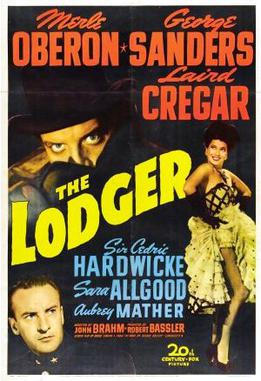
The Lodger is a 1944 American horror film about Jack the Ripper, based on the 1913 novel of the same name by Marie Belloc Lowndes. It stars Merle Oberon, George Sanders, and Laird Cregar, features Sir Cedric Hardwicke, and was directed by John Brahm from a screenplay by Barré Lyndon.
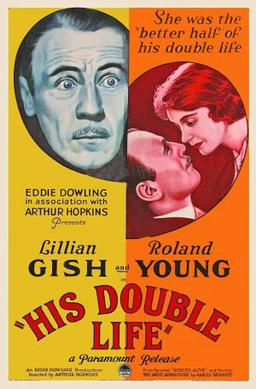
His Double Life is a 1933 American pre-Code comedy drama film directed by Broadway theatrical impresario and first time film director Arthur Hopkins with directorial input from the experienced William C. deMille, Cecil's older brother. It stars Roland Young and Lillian Gish.

Richard Fraser was a Scottish film, television, and stage actor. He is perhaps best known for his role in the 1945 film The Picture of Dorian Gray.

The Great Adventure is a 1921 American silent romantic comedy film produced by Whitman Bennett and distributed by First National Pictures, then called Associated First National. The film was directed by Kenneth Webb and starred Lionel Barrymore. Fredric March made his screen debut in this film. The film is based upon the 1908 novel Buried Alive by Arnold Bennett. It was remade in 1933 as His Double Life starring Lillian Gish. The Great Adventure is a surviving feature film held by the Library of Congress.
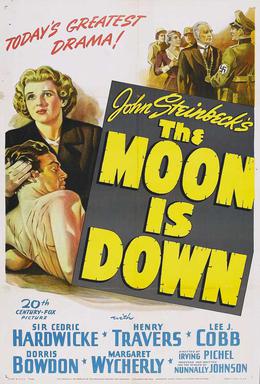
The Moon Is Down is a 1943 American war film starring Cedric Hardwicke, Lee J. Cobb and Henry Travers and directed by Irving Pichel. The Screenplay was written by Nunnally Johnson and is based on the 1942 novel of the same name by John Steinbeck. This was the Dorris Bowdon's last movie and Natalie Wood's first movie and features an uncredited John Banner who would go on to play Sgt. Shultz in the TV comedy series Hogan's Heroes.


















